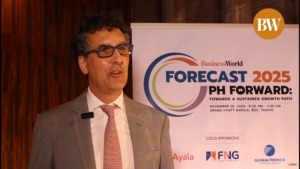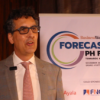THE World Bank said Philippine headline inflation will continue to settle within the Bangko Sentral ng Pilipinas’ (BSP) target range until 2026, raising the possibility of further easing, though it warned that the forecast faces risks to the upside.
It added that monetary policy divergence with the US could exacerbate exchange rate pressures and capital outflows.
“While the BSP expects inflation to stay within target for 2025-2026, the balance of risks leans to the upside. The likelihood of higher transport charges, electricity rate hikes, and elevated food prices continue to pose risks to the inflation outlook,” the World Bank said in its monthly economic developments report.
The Philippine Statistics Authority reported that inflation rose 2.9% year on year in January, level with the December reading. In 2024, inflation was 3.2%, in line with the BSP’s forecast.
This was the first time for full-year inflation to fall within the central bank’s 2-4% target range since 2021, when inflation averaged 3.9%.
The bank said with the return of inflation to the target range, “keeping it in check is critical for further monetary easing and supporting domestic demand.”
“Non-monetary policy measures to increase domestic production, address distributional imbalances, and enhance resilience to supply shocks remain important to managing inflation,” it said.
The World Bank also noted BSP Governor Eli M. Remolona, Jr.’s remarks that monetary authorities may cut rates by only 50 basis points this year.
The Monetary Board, which meets on Feb. 13, has cut benchmark borrowing costs by 75 basis points since it began its easing cycle in August 2024, bringing the key rate to 5.75%.
“The prospect of narrowing US interest rate differentials may lead to further depreciation pressures and capital outflows,” the World Bank said.
The peso closed at P58.03 to the dollar on Friday, strengthening by 15 centavos from its P58.18 finish on Thursday, according to the Bankers Association of the Philippines.
This was the peso’s strongest close in more than a month, or since its P57.91 per dollar finish on Jan. 2.
It said that the possibility of higher-for-longer US interest rates in the US caused a reversal of capital flows and a stronger dollar.
Reuters reported on Friday that the Federal Reserve officials view the US job market as solid and noted the lack of clarity over how President Donald Trump’s policies will affect economic growth and still-elevated inflation, underscoring their no-rush approach to interest rate cuts. — Aubrey Rose A. Inosante


















